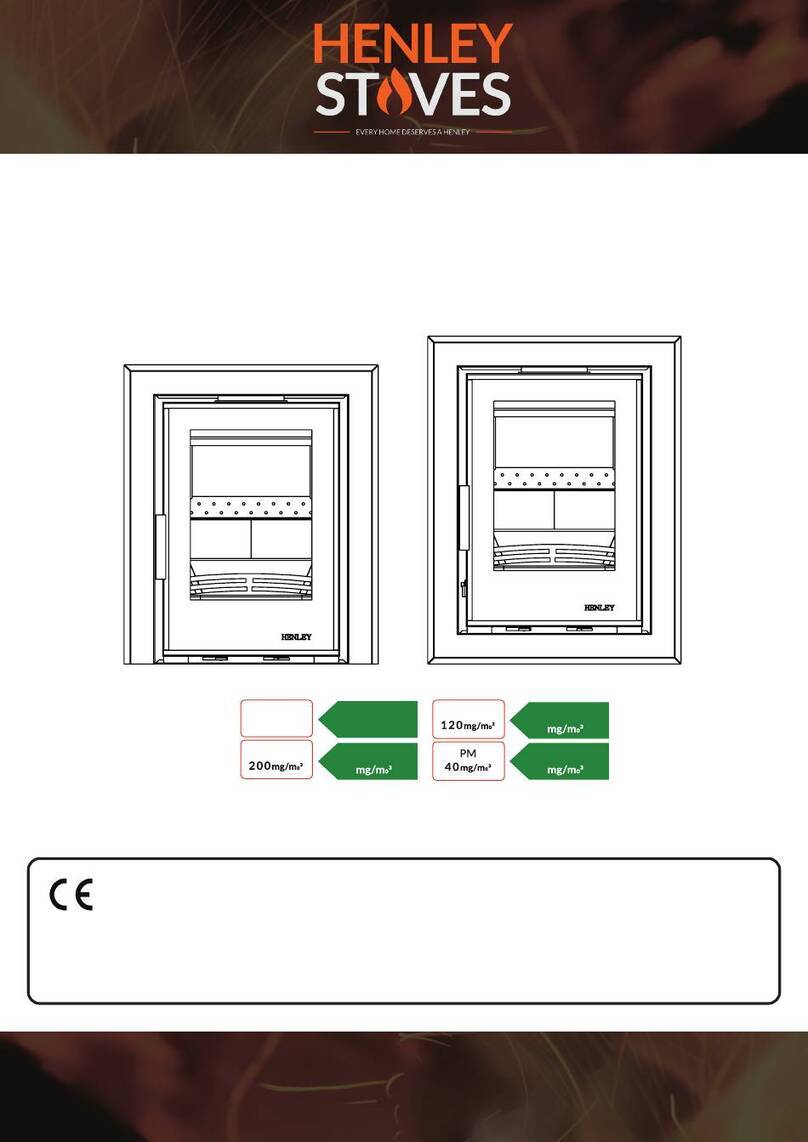
5
Installation Instructions
Installation
Before installation and/or use of this appliance
please read these instructions carefully to ensure
that all requirements are fully understood. The
appliancemustbettedbyaregisteredinstaller*,
orapprovedbyyourlocalbuildingcontrolocer.
Regulations
Please refer to the current issue of
British Standard BS 8303, Code of Practice
for Installation of domesting heating
appliances burning solid fuel, Building
Regulations, Local Authority Bylaws and other
specicationsorregulationsincludingIreland,
UKorEUstandardsreferredtoastheyaectthe
installation of the stove.
Building regulations available on www.environ.ie
& www.planningportal.gov.uk.
Domestic Heating
Only use for domestic heating in accordance with
these operating instructions.
Fuel
Only approved fuels must be burned.
Do not use liquid fuels or as an incinerator.
Fireguard
Appliance surfaces become very hot when in
use.AreguardconformingtoBS8423:2010
should be used in the presence of children, the
elderlyorinrm.
Please note, this appliance should be used with
theredoorclosedatalltimesexceptwhen
fueling, cleaning ash or initial lighting.
Combustible Materials
Do not place photographs, TV’s, paintings,
porcelain or other combustible items on the
wall or near the appliance. Exposure to hot
temperatures will cause damage. Do not place
furniture, or other items such as drying clothing,
closer than 1 metre from the front of this
appliance. Do not use aerosol sprays or any other
ammablematerialsneartheapplianceunderre.
Asbestos
This stove contains no asbestos. If there is a
possibility of disturbing asbestos in the course of
installation then please seek specialist guidance
& use appropriate protective equipment.
Fire Cement
Sometypesofrecementarecausticand
should not be allowed to come into contact
with the skin. In case of skin contact, wash
immediately with plenty of water.
Extractor Fan
It is possible to install this appliance in a kitchen
or open plan room which uses an extractor fan.
Adequate provisions must be made, as the
extractor will draw air from the room. A draught
test needs to be carried out on the appliance
with the extractor fan running on full power.
Based on results from the draught test, extra
ventilation should be added where necessary.
Ventilation:
Do not obstruct inside or outside ventilation
required for the safe use of this appliance.
Alterations
Do not make unauthorized changes to the
appliance.
Chimney
The chimney must be swept at least once a
year.
Flue System
Donotconnect,orshare,thesameueor
chimney system with another appliance.
Serial Number
The serial number is required when ordering
spare parts or making warranty claims. It is
found on the appliance data plate.
Manual Handling
Before continuing any further with the
installation of this appliance please read the
following guide to manual handling.
• Always obtain assistance when lifting
• When lifting always keep your back straight
• Avoid twisting at the waist. It is better to
reposition your feet.
• Avoid upper body/top heavy bending. Do not
lean forwards or sideways
• Always grip with the palms of your hands do not
useyourngertipsforsupport,useglovesfora
better grip
• Always keep the stove close to the body as this
will minimize the cantilever action.






























